All dulcimers are not created equal. And that's one thing I always repeat myself on. A dulcimer is a very serious instrument, and there are a lot of different ways that thing can be put together and played. Sam is on the West Coast, and he got me to build him a guitar held dulcimer. And Sam is a man after my own heart. He is a surviving hippie who is now a follower of Jesus.
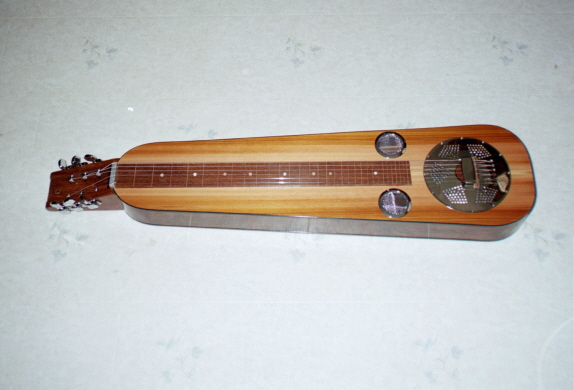
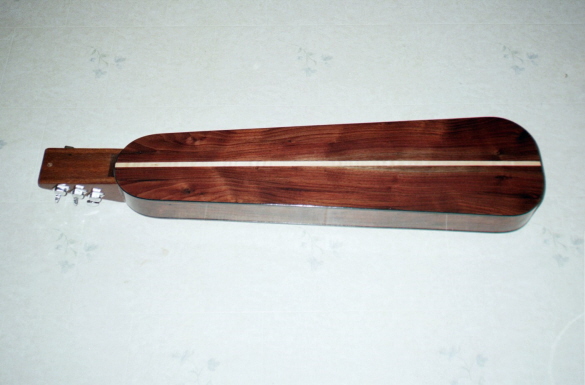
Graham gives me a lot of ideas on a dulcimer, and I am more than happy to build for him, and then to steal his ideas and act like they were my own. And just when a person thinks a dulcimer has been pushed to its furthest limit, Graham proves that there can be something more. He ordered a resonator cone and cover that was built for a uke. We used that on this dulcimer, and it is a fretless slide model.
Graham is the owner of more of my dulcimers than any other one person Iíve ever built for. And this is the second Herald model that he owns. We did a couple of things off the beaten path on this instrument. Graham wanted to go for the biggest and best sound possible. The Herald model definitely gives the best sound. And we went with more sound holes than normal. Along with additional sound holes in the top, we went with one in the side that will be facing those who are listening. Also, this dulcimer is equipped with a piezo pick-up.
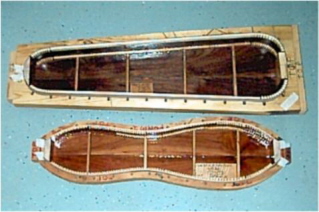
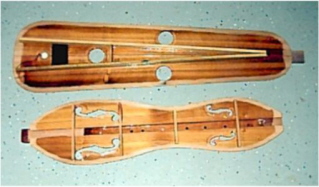
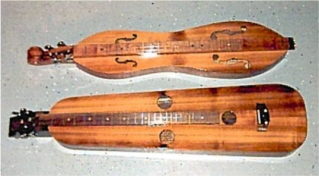
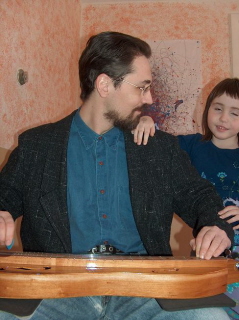
Here's the newest thing in my lineup of acoustic instruments. Somewhere in my website I mention that I try very hard to take dulcimer players seriously. Well here I am trying to take dulcimer players even more seriously yet. I've been building for ten years now the typical hourglass shaped dulcimer. I've made a few changes in the way it's commonly built, because I wanted a bigger and better sound. Dulcimers are typically kind of slim. The sides are not very deep. My hourglass shaped dulcimer is much deeper than most that I've seen. Also I put a finish on the inside. Not only does the finish on the inside prevent moisture gain and loss and preserve the glue, but it also increases the volume. I use bigger strings on my dulcimers. Not speaking poorly about anything or anybody, but the strings that Martin sells for a dulcimer are just too doggone small. Most people's dulcimers would realize a much better sound if they would put a little bigger strings on it. I use a 26 for the bass and 16's for the plain strings. I've been dissatisfied, however, because those improvements that I've made only take me so far. I've been wanting something better yet and I've finally taken the time to develop what I really like. Let me walk you through a comparison of the dulcimer I've been building and the new one I've just finished developing and building.
The typical bracing for a dulcimer is called ladder bracing. If you were to stand the dulcimer up on one end, you would see that the bracing looks like rungs in a ladder. This new dulcimer has bracing that runs the length of the body. Generally, the bridge on a dulcimer is at the very back end of the body sitting almost on top of the tail block. That restricts the vibration. The concept that I think is the best is that of a flat top guitar. The bridge is kind of centrally located in the middle of the top. So I extended the back end of the dulcimer so that the bridge wouldn't be placed at the very end. After taking measurements of a standard dulcimer chipboard case, I found that I could make the dulcimer considerably larger and it would still fit.
Also, I have a line of instruments called "The Herald". On these instruments, I don't have a waist. A waist looks nice, and on a guitar, is very convenient. But everything on a stringed instrument is a trade off. For everything you get, you have to give something up. An instrument with no waist has a much fuller sound. So this dulcimer has no waist.
My typical hourglass dulcimer has a body that is a little over 2" in depth. This Herald model is a little over 3". I make a very nice scrolled headstock on my typical dulcimer. The downside to that headstock is that you don't have a straight string pull. When the strings go across the nut, they have to bend one direction or another to go to their machine heads. The headstock on my Herald model is not nearly so pretty, but is way more functional. There is a straight string pull which makes for easier tuning and less string breakage. This particular model is a 4-string and the fretboard is not hollow as is on most standard dulcimers. This fretboard is black walnut, like the sides, back, and headstock. And it is about 3/8" thick. This allows me to use a bridge like that of a flat top guitar.
Also, just as an added thing, I've installed a piezo and a jack in the tail block. More folks are looking to play before big crowds these days, and the electronics is always a problem. This is a very powerful pickup and would never disappoint, whatever the occasion might be.
My starting price on this dulcimer is going to be $500 and there are several options that can be had - wood choice, case, electronics, and things such as that. And, indeed, the sound is infinitely better than any other dulcimer I have built to date.
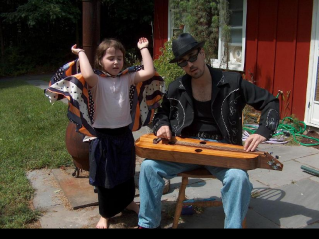
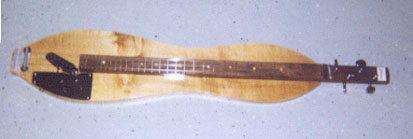
I have two different body shaped electric dulcimers. The one that is shaped like the traditional acoustic dulcimer is the Refuge. It can be had with either traditional fretspacing or chromatic. There is no additional charge for the chromatic spacing. These instruments can be had in a variety of different wood combinations also at no additional charge, if it's a wood I keep in stock. They come with a single coil pickup that is positioned for the best possible sound. Also, they have tone and volume control and a bridge that allows for action adjustment. They come with covered machine heads.
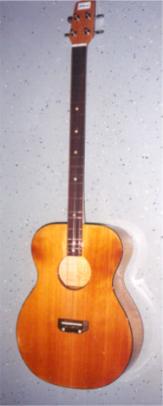
I'm trying really hard to take dulcimer players seriously. Most acoustic dulcimers I've seen that play like a guitar have bodies that are small, thin, and of peculiar shape. This body is built every bit as good as one of my guitar bodies. The bracing is positioned in such a way as to give good stability and tone. The body is 15" long, 12" at the lower bout, 9" at the upper bout, and 3 1/2" in depth. The neck/fretboard is chromatic and has 24 frets. The overall length of this instrument is 36".

This is my solid body electric guitar style dulcimer, and it is my Seraph model. This is the ultimate in an electric guitar style dulcimer. Tone and volume controls, a bridge that allows for action adjustment, an actual fretboard instead of just cutting fret grooves in the top of the neck. This instrument has a 26" string length with a whopping 29 frets, a repositioned single coil pickup, and all chrome hardware. It comes with a gigbag.

While you're adding some funk and groove to your mountain dulcimer, if you're thinking you would like a really cool design, maybe this is it. It's equiped and priced as my other solid body dulcimers.
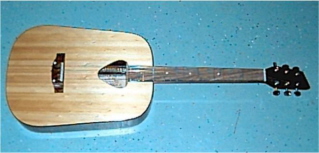
This dulcimer is played Hawaiian style. It has a square neck and a Herald body. The body on this dulcimer is a little bit smaller than the Herald I use for guitars. On this instrument, the body is 13" in the lower bout, 11" in the upper bout, 18" in length, about 3 1/2" in depth, and with a 24" string length. Traditional dulcimer fret spacing or chromatic fret spacing are both possible. This particular model has six strings, but the traditional four strings can be had.
My acoustic dulcimers with a scrolled head are $400. My dulcimers come in a chipboard case. The solid body electrics are also $400. A person can choose most any body shape they want and any woods that I commonly use and the price remains the same. My acoustic guitar style dulcimers sell for $500 and will either come in a case or a gig bag. The Seraph model guitar style dulcimer sells for $500. The Hawaiian style acoustic Herald guitar model dulcimer starts at $600. I charge $50.00 for shipping.